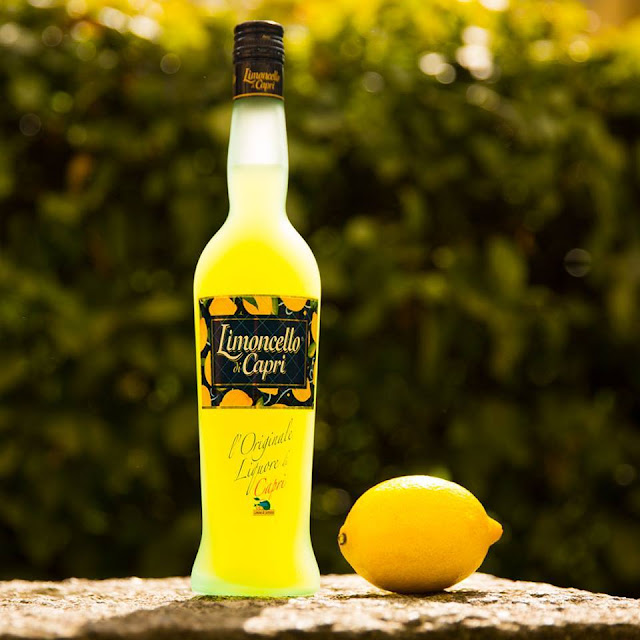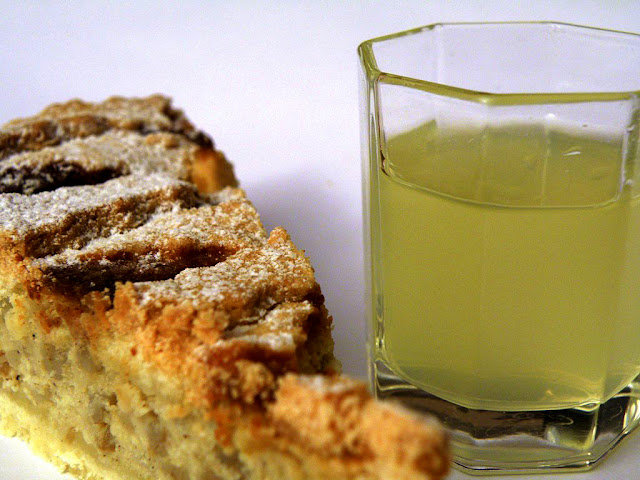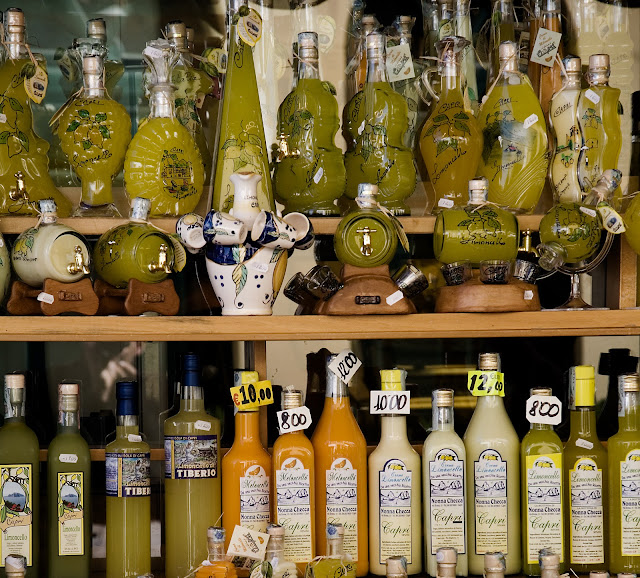When Life Gives You Lemons... Make Limoncello!
Limoncello is a tasty aperitif that is popular along the Amalfi Coast of Italy that is considered a specialty of this area. Families have passed down recipes for this favored drink for centuries. Almost every family has its own recipe. The actual origins of Limoncello are shrouded in mystery because three areas Amalfi, Capri, and Sorrento claim that they invented this golden yellow, sweet elixir.
Wrapped in a myriad number of legends, the history of Limoncello is not easy to decipher. In Capri, it is believed that this liquor originated in 1900 in a small inn owned by Maria Antonia Farace who tended a beautiful garden of lemon and orange trees. She created this liquor using the lemons from her gardens and would serve it to her guests after dinner. After World War II, her nephew opened a bar that attracted guests because he was serving drinks using his grandmother’s recipe for this lemon liquor. Because of the popularity of this drink, in 1988, Farace’s great-grandson, Capri businessman, Massimo Canale, was the first to register the trademark Limoncello. Today, Limoncello di Capri is still run by the grandchildren of Signora Canale.
 |
| Courtesy of Limoncello di Capri |
In Compania, it is thought that this liquor originated in a monastery. Another story goes even further back in time to the Middle Ages where it was believed that fishermen would drink a shot of Limoncello early in the morning to warm up before heading out to sea.
The thick skin of lemons that grow only on the Amalfi coast is the key ingredient when making traditional Limoncello. The lemon zest, rich in essential oils is soaked in grain alcohol until the oil is released and then it is mixed with simple syrup. What makes each brand and recipe of Limoncello unique is the amount of simple syrup, the number of lemons and the temperature used in the production of this liquor. The entire process can take up to three months or longer, depending on how you want limoncello to taste.
Limoncello is considered as a “digestivo” and, today, it is often served by restaurant owners to guests after a meal. Whatever story you believe about the origin of Limoncello, don’t miss out on this tasty aperitif when visiting the Amalfi coast.
Drinking Limoncello
In Italy, Limoncello is typically served after dinner or with a dessert course. This lemon drink is a wonderful palate cleanser. It is always served chilled. Limoncello is typically served straight or with a splash of tonic. It is also paired with champagne or mixed with juice as a cocktail. It is delicious when it is drizzled over ice cream and added to fruit salad or fresh strawberries. If you are serving it at home, store your bottles of Limoncello in the freezer until you are ready to serve it.
Although the traditional way of drinking Limoncello is straight or with a dash of tonic water, Food and Wine Magazine offers the following recipes.
Instructions - In a Champagne flute, combine 1-ounce limoncello and 5 ounces Prosecco. Garnish with a brandied cherry.
Instructions: In a mixing glass with ice, combine 2 ounces bourbon and 1-ounce limoncello. Add a dash each of orange bitters and Angostura. Stir until well-chilled. Strain into a glass without ice. Garnish with a long, skinny lemon peel.
Instructions: In a cocktail shaker with ice, combine 1-ounce gin, 3/4 ounce limoncello and 1/4 ounce freshly squeezed lemon juice. Shake that all up and strain into a tall glass with fresh ice. Top with 4 ounces club soda. Garnish with lemon wheels.
If you haven’t had the pleasure of sipping Limoncello, give it a try, the taste of the sunny Amalfi Coast awaits. Tours of Distinction’s Tuscany to Amalfi tour is an 11 day trip for a small group of no more than 16 travelers that visit all of Italy’s hot spots and more. The tour dates are October 1-11, 2019. For tour details click here.





